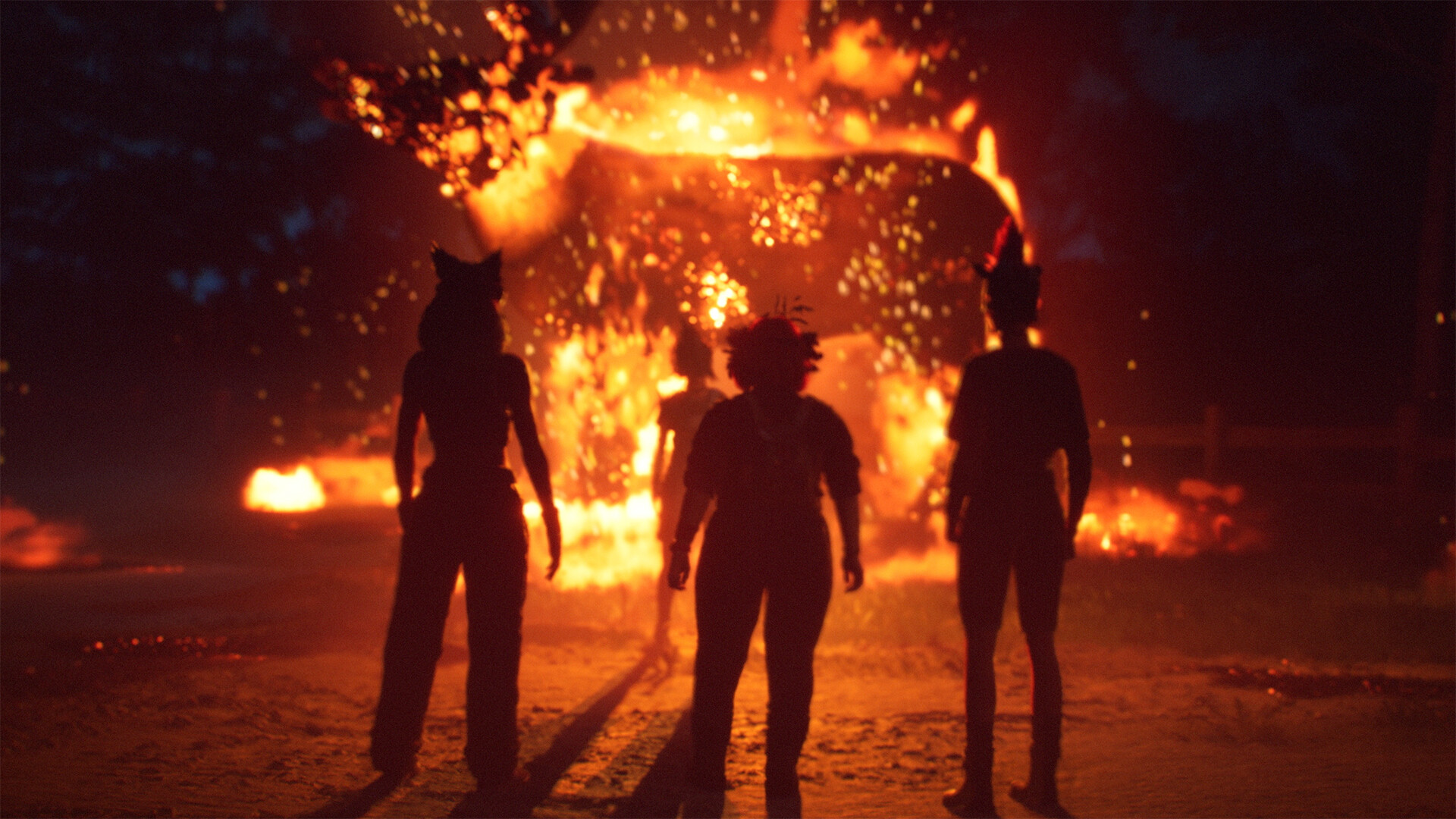A history of shiny things in video games
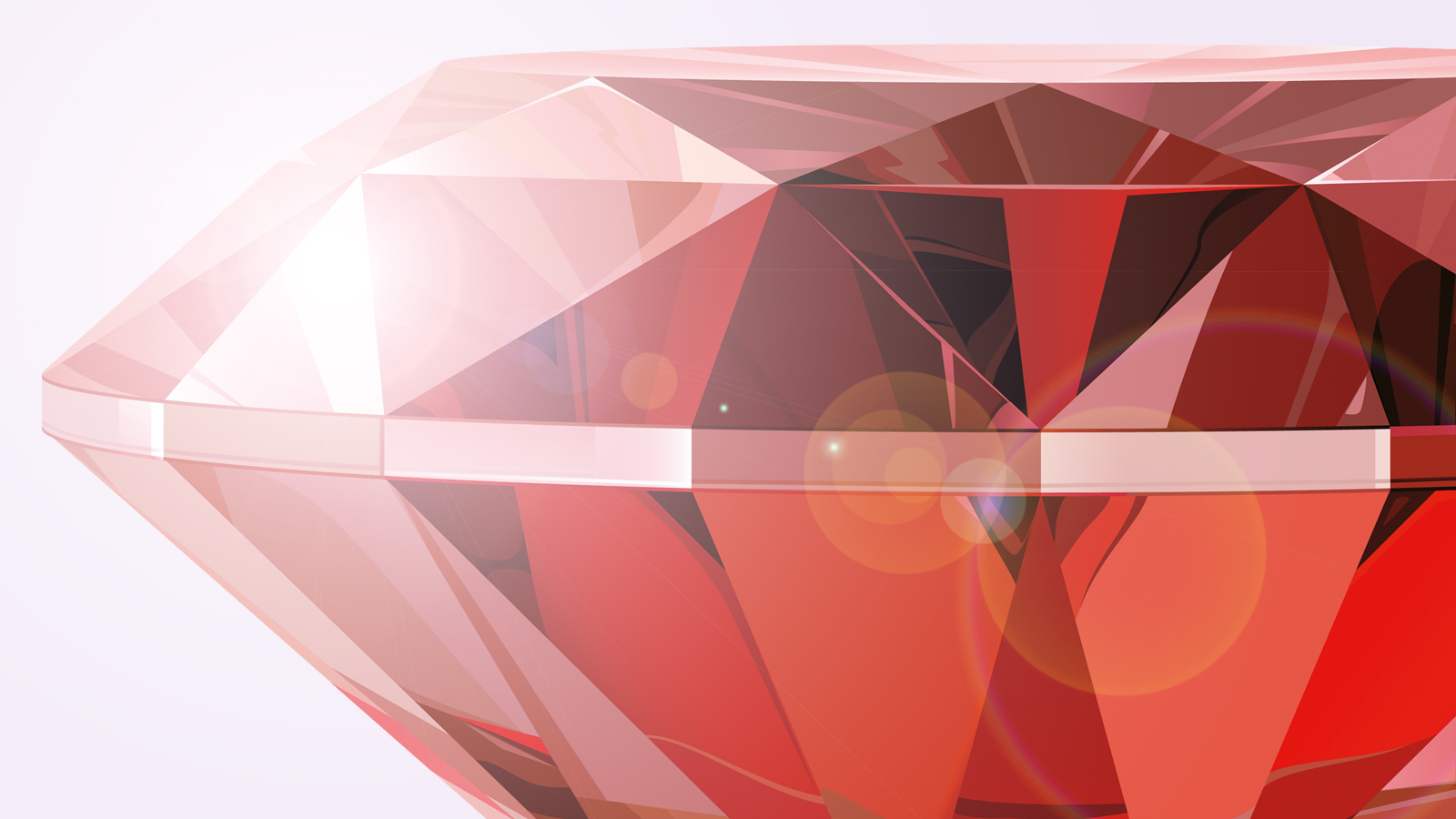
Ooooo... shiny!
Right. Better pull the curtains closed or hide your mobile device's screen from view or you're gonna get mobbed by magpies. I know iPhone screens are relatively scratch-resistant, but those beaks are damn sharp.
Why are we taking such precautions? Because this is the history of shiny things in video games. And by that I mean things in games that feature sheen or sparkle or generally anything a bit bling. Though I personally hate that word. Always makes me think the phone's ringing. So let's do this. Let's start at the DAWN OF TIME. Now you've done that, fast-forward to the mid-1980s when games actually became 'a thing' and we'll continue from there. Here we go...
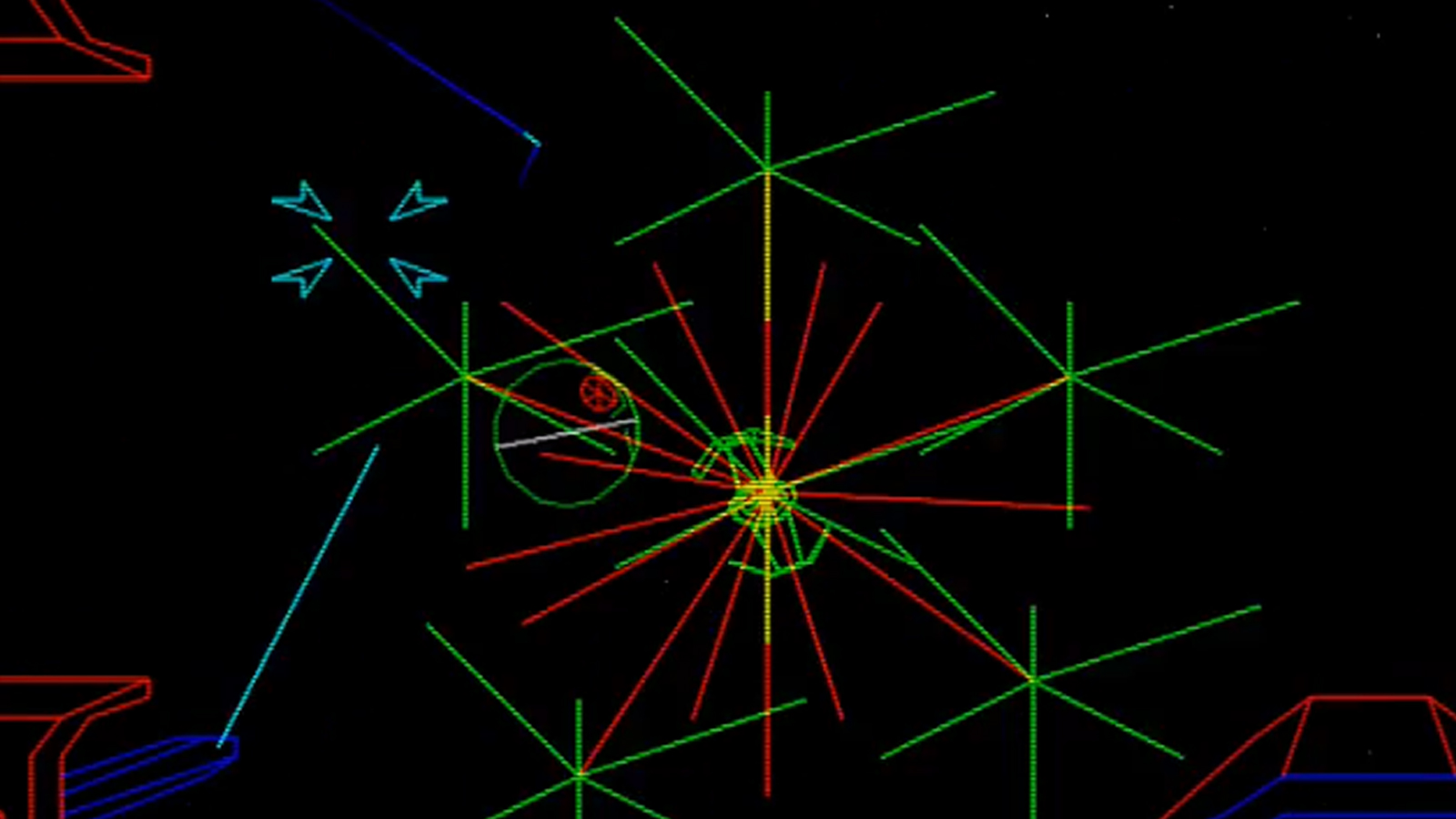
Star Wars' laser shots (1983)
This Atari classic features beautiful wireframe graphics. If you think they look old and crap, then well, frankly they think you're young and crap. That's what I heard, man. Yeah I know, they should try saying it to your face. I know, they ain't got shit. I hear you.
But anyway, the point here is that wireframe sparkles. When modulating through a spectrum of colours rapidly it can look like horrible sparkly lasers of death. Yes, they do look like snowflakes. No, that wasn't the intention. They're meant to be terrifying. But they're arguably the shiniest thing early '80s gaming gave us, so let's not laugh too hard. Solemnity, please.
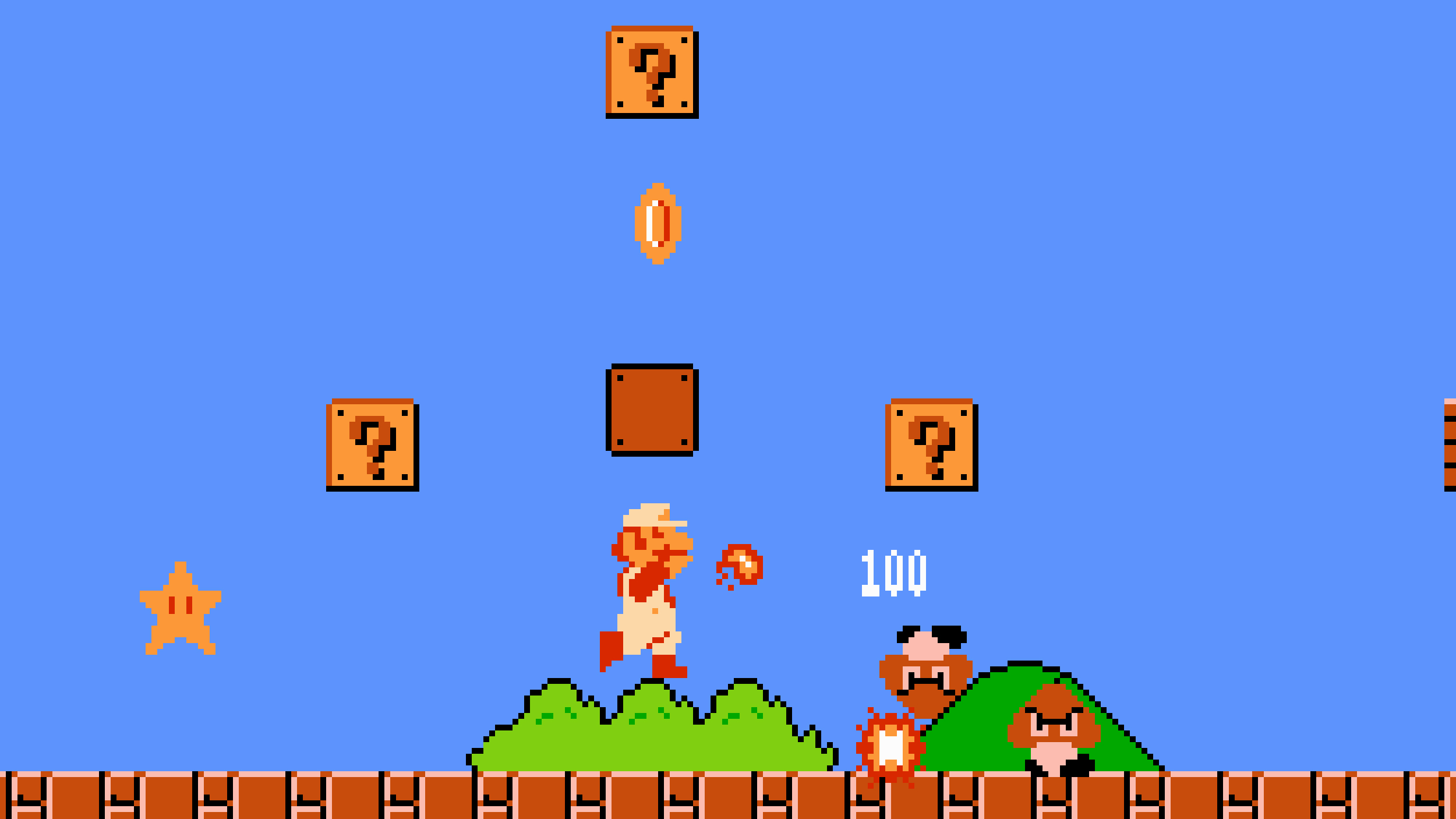
Super Mario Bros' coins (1985)
Super Mario Bros. may have single-handedly revived the entire video game market after Atari pretty much killed it (didn't realise he had a defibrillator under that moustache, but hey-ho), but did you ever stop to think why? It was the shiny coins. Ba-ding! Ba-ding!
Random actually-unrelated onomatopoeic words aside, collecting the shiny coins in Mario is fun. And if you collect 100 of them, you get an extra life, which essentially means you get longer to play the game. Longer to collect the shiny coins. It's the perfect cycle.
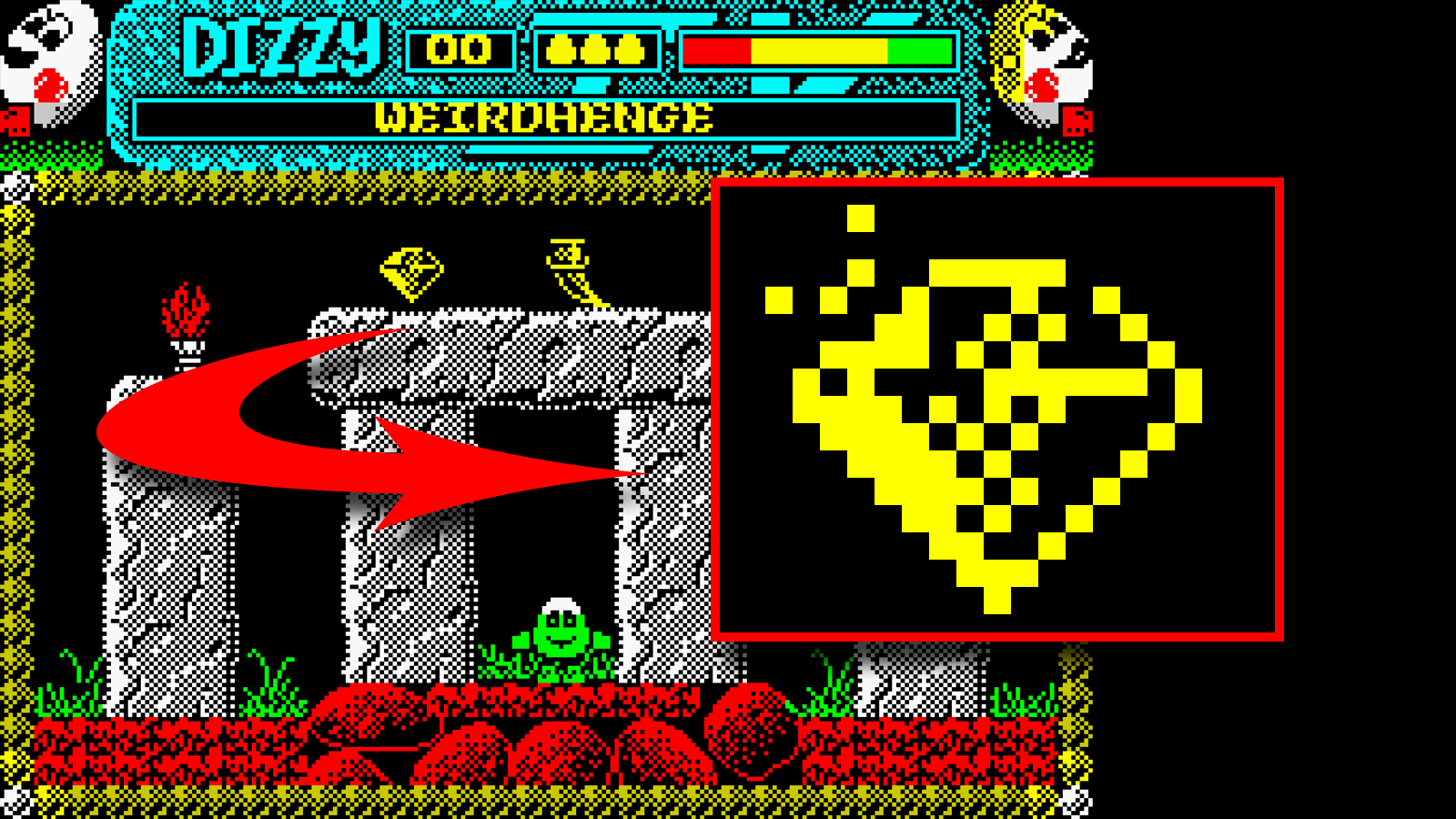
Magicland Dizzy's diamonds (1990)
When you've got 7 colours at two levels of brightness (plus black--wooooo), and only two colours can occupy the same section of the screen at once, shininess is difficult to convey. Obviously, this being a feature written by me, I have chosen a Dizzy game to illustrate how that can be done. Not just functionally, but with panache.
Magicland Dizzy features collectible diamonds, many secreted in hard-to-reach areas. These diamonds may be yellow and more pixellated than nudity on You've Been Framed, but they sparkle. Boy, do they sparkle. There's a little animation on each one that glints every couple of seconds with a few pixels of immaculate sheen. Gorgeous. Who needs fancy modern graphics?

Sonic the Hedgehog's rings (1991)
You can't have a list of shiny things without mentioning the rings in Sonic. The original 16-bit game may have speed, excellent level design, classic iconography and wonderful music, but the mystique comes from these beauties. Gold rings that hang in the air, silently rotating. Just think about that. If you happened upon some of those in real life, how transfixed would you be? Exactly.
When you collect them, they leave behind a momentary sparkle. But the reason they're on this list is because they pre-date environment mapping, but are all about the shiny. Perfectly uniform rings of gold. Magic.
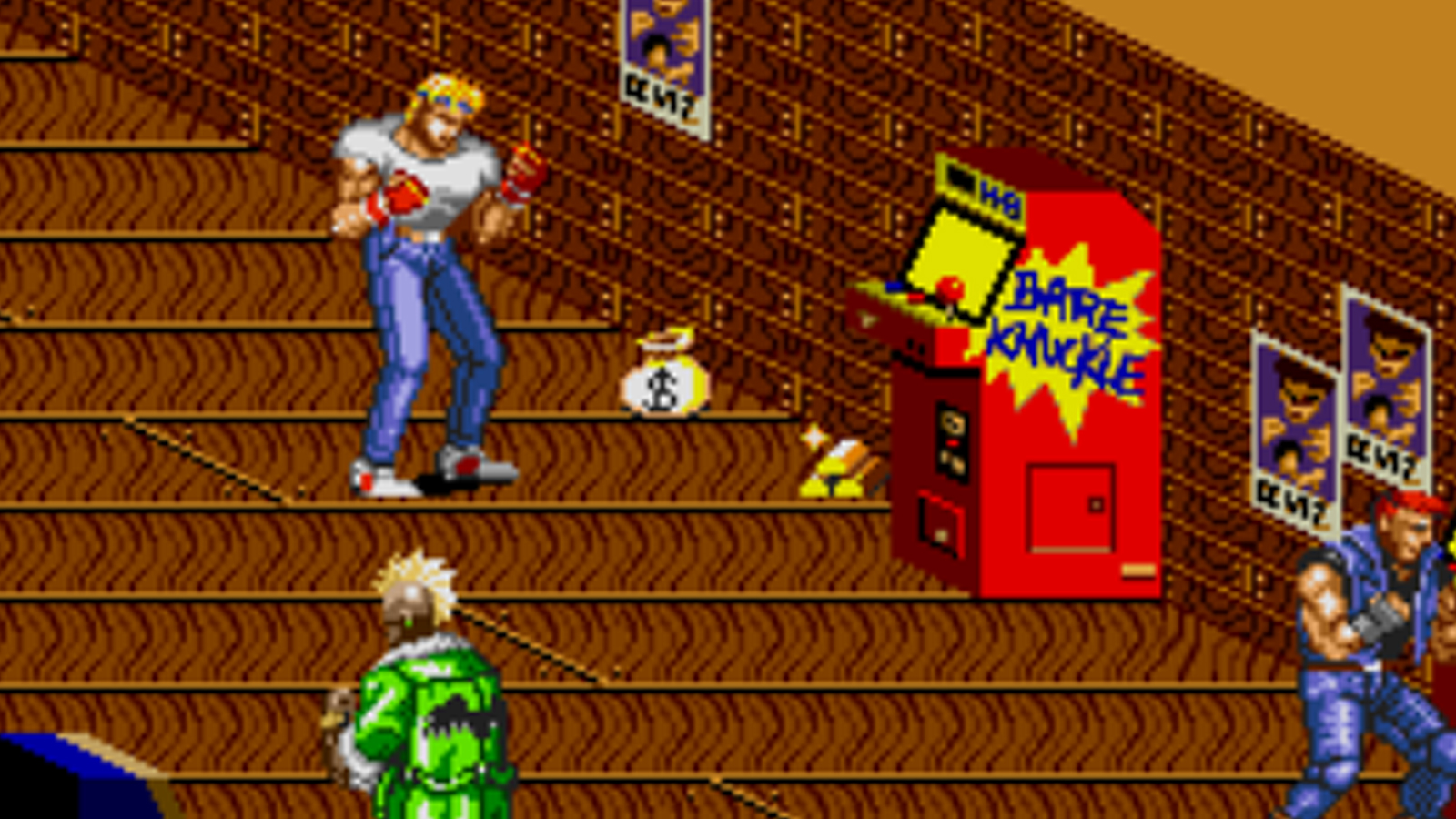
Streets of Rage 2's ingots (1992)
These collectibles aren't even animated like Dizzy's are, but they're still remarkably shiny. Look at the burnish on that. Mmmm. That's good burnish. That gleam effect isn't even gleaming off any particular surface of the gold bars. It's just there to illustrate that they are extremely shiny.
But it works, does it not? Whenever you smash open a cabinet in the arcade (using the head of some goon, of course) and one of these appear in its place, you know it isn't going to give you anything but a nice noise and some extra points. But I know what you think in your mind. 'Ooh! Shiny gold! Must pick it up...' Tell me I'm wrong.
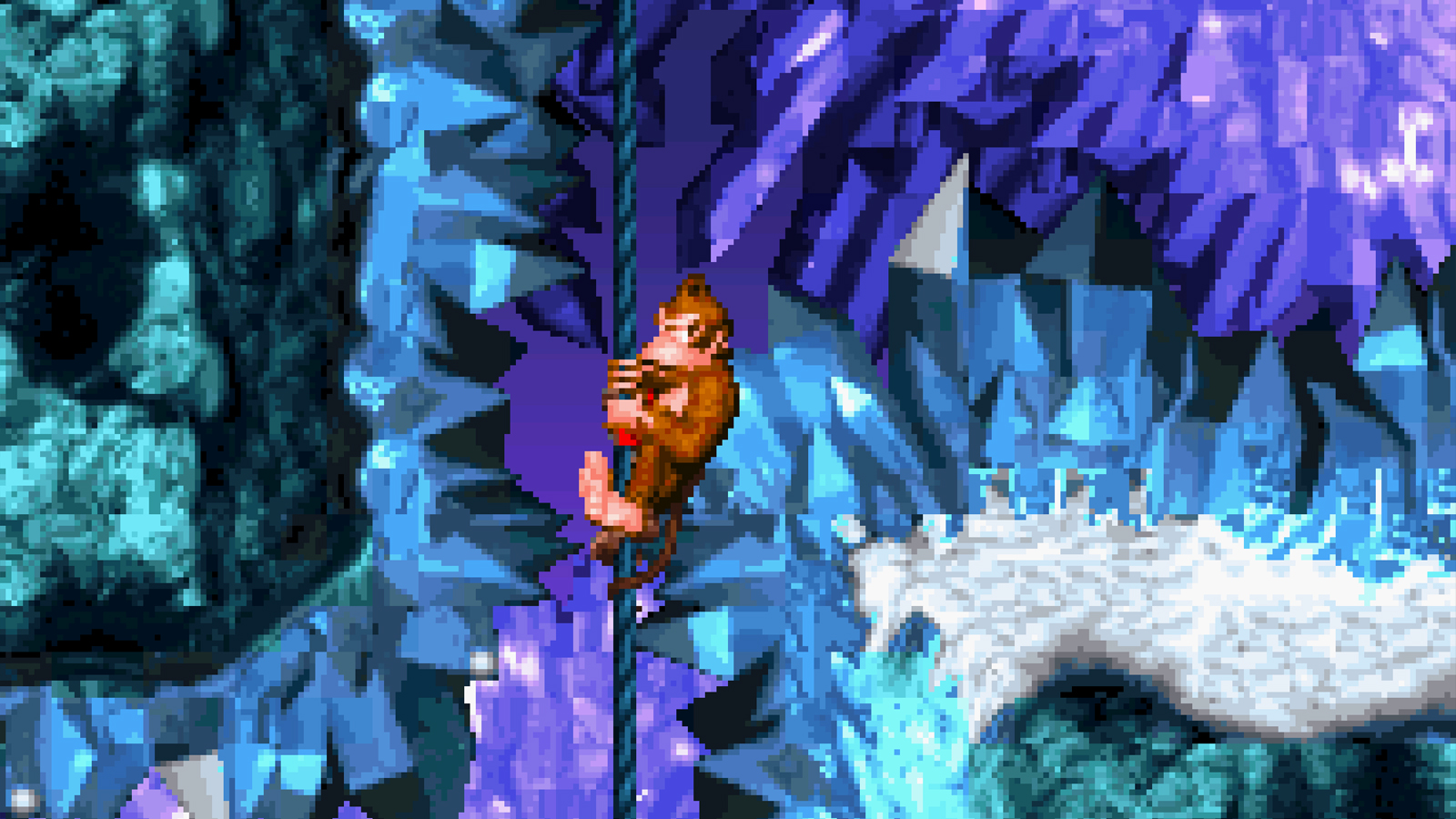
Donkey Kong Country's ice caves (1994)
Donkey Kong Country was, briefly, the best-looking game you could buy. The reason was simple. The SNES couldn't render the graphics it was actually displaying. So instead an ultra-powerful computer rendered out amazing images and then they were fed into the SNES to make scenes like this.
These ice caves are animated with sparkles and even flashes of light as the camera catches the right angle of pre-rendered crystal. Looking at it now, it still makes me say things like 'ooo'. Pixellated still images don't do it justice. On a standard-def TV in the 1990s, this was phenomenal.

Tomb Raider's save crystals and 'Midas' death (1996)
If you ever want to highlight the difference between a Sony PlayStation and a Sega Saturn (and I know that's still a daily conversation everyone has these days), you just have to say 'the save crystals in Tomb Raider'. Because on Saturn, they are blue, gouraud-shaded diamonds, but on PlayStation, they are translucent crystals that refract the environment. Bluely.
But if that's not enough to prove your knowledge (and it should be), then bring out the big guns, namely the 'Midas Death'. If Lara jumps onto the palm of the 'Midas' statue's hand, she turns to gold (something I stupidly did even though I knew the legend and got warned by my dad seconds previously). On Saturn, she just turns yellow. On PSone? Proper shiny. But not truly reflective--look closely and you'll see that the word 'Midas' is not mirrored on her surface, which implies she's actually transparent, like the save crystals. Yes, that's pernickety. Even so, I reckon someone at Polyphony Digital must've played this and had an idea
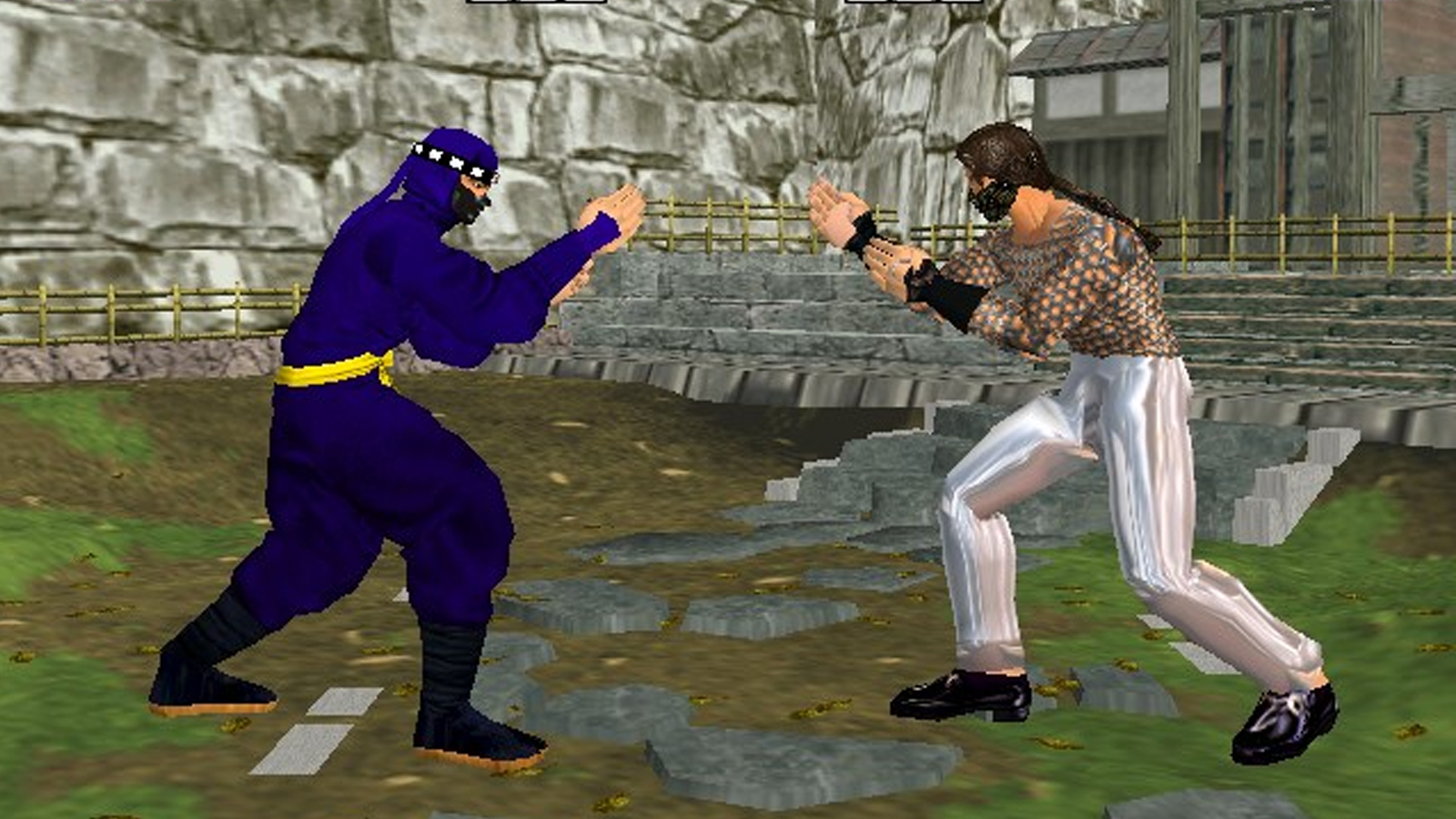
Virtua Fighter 3's shiny trousers (1996)
Kage-Maru is a ninja. In VF2 he wears blue ninja clothes. His 'ninja-yoroi' outfit includes a headband that can be knocked to the floor. But, despite looking metal, it's not very shiny. No, Kage (pronounced 'car-gay', not 'cage', which surprised the hell out of me too when I heard the announcer in VF5 on 360) had to wait until VF3, at which point he procured shiny trousers.
This was a Big Deal in 1996. I'm not kidding when I say these trousers offered everyone a glimpse of the future. The gloss effect is so shiny, it immediately raised doubt in my mind as to whether VF3 could in fact come to the Saturn, as was said to be happening at the time. "Sega Saturn can't do trousers that shiny", I said to my friends with a grim expression of extreme concern. Sure, the effect was not true 'environment mapping' (more on that later), but it was super-advanced. Trousers of a wizard. It's the only explanation.
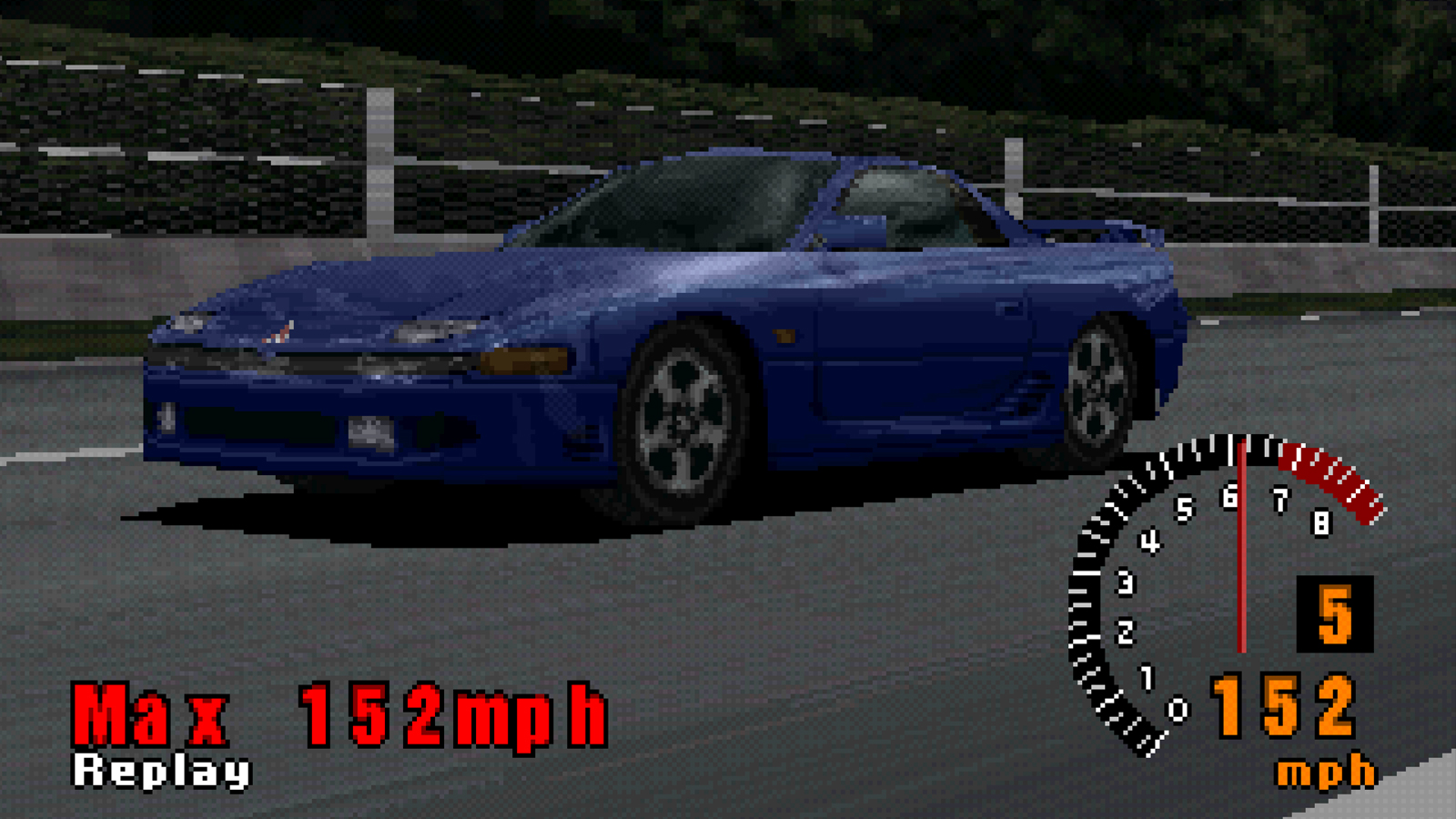
Gran Turismo's pseudo-reflective cars (1997)
When you look at the likes of Forza today, you see showroom-sheen paintwork. Gran Turismo is the reason for that. Before Gran Turismo, everyone was happy just to have matte-finish paintwork. But then GT came along with the shiniest virtual cars anyone had ever seen, and everyone was transfixed. Like a moth to a flame, or a fly into an erm bug-zapping blue light thing. Whatever they're called, I don't know.
The graphical technique in GT1 isn't true reflectiveness. It's actually a second layer of polygons wrapping a translucent 2D image over the car. That's why the cars in GT always seem to be reflecting street lights. Nobody cared back in '97. These cars were shiny and that meant everyone had to buy them. Never underestimate the commercial power of shiny things. I swear the series is still riding on the initial impact of its shininess.
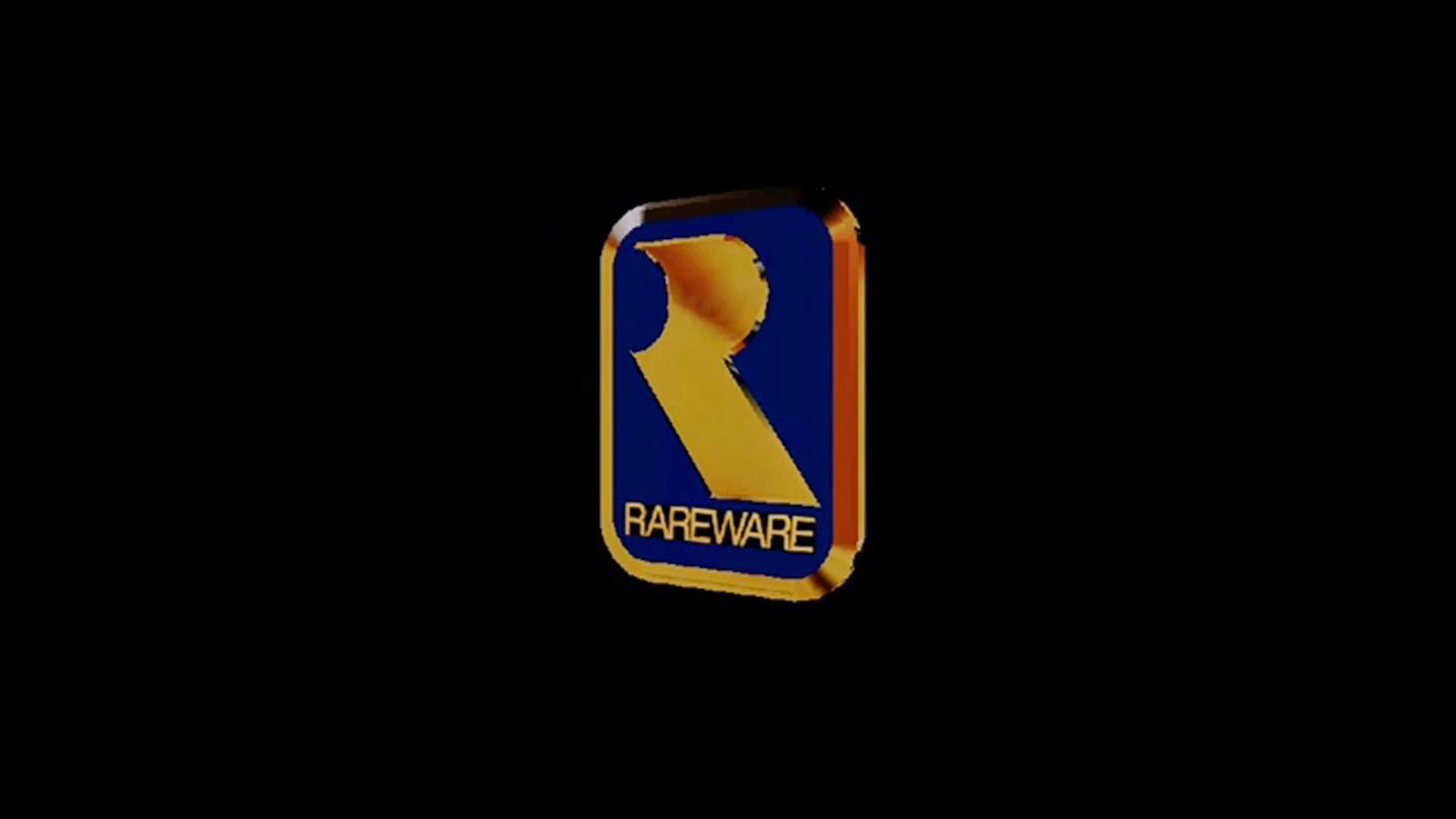
Goldeneye's RareWare logo (1997)
August 1997 saw the seminal Goldeneye 007 released on N64, with some 8 million households across the world simultaneously banning Oddjob from multiplayer matches. But the game wouldn't have sold half as many copies if it hadn't featured an example of extreme shininess within seconds of loading the game up. No really, it's a scientifically proven fact. No, I er... don't have the link (cough) so you'll have to trust me on that.
The silver, spinning Nintendo logo that precedes this marvel is reflective enough, sure. Impressive, even. But then that fades away and what fades in is nothing short of remarkable. A RareWare logo so polished it looks like it's made of REAL metal. Real metal that's cold to the touch. Like the unfeeling gunmetal of a loaded Klobb. Suffice to say, any game that follows this logo was always going to be awesome. Nobody would spend that long polishing a developer logo if the game was made of turdcrap.
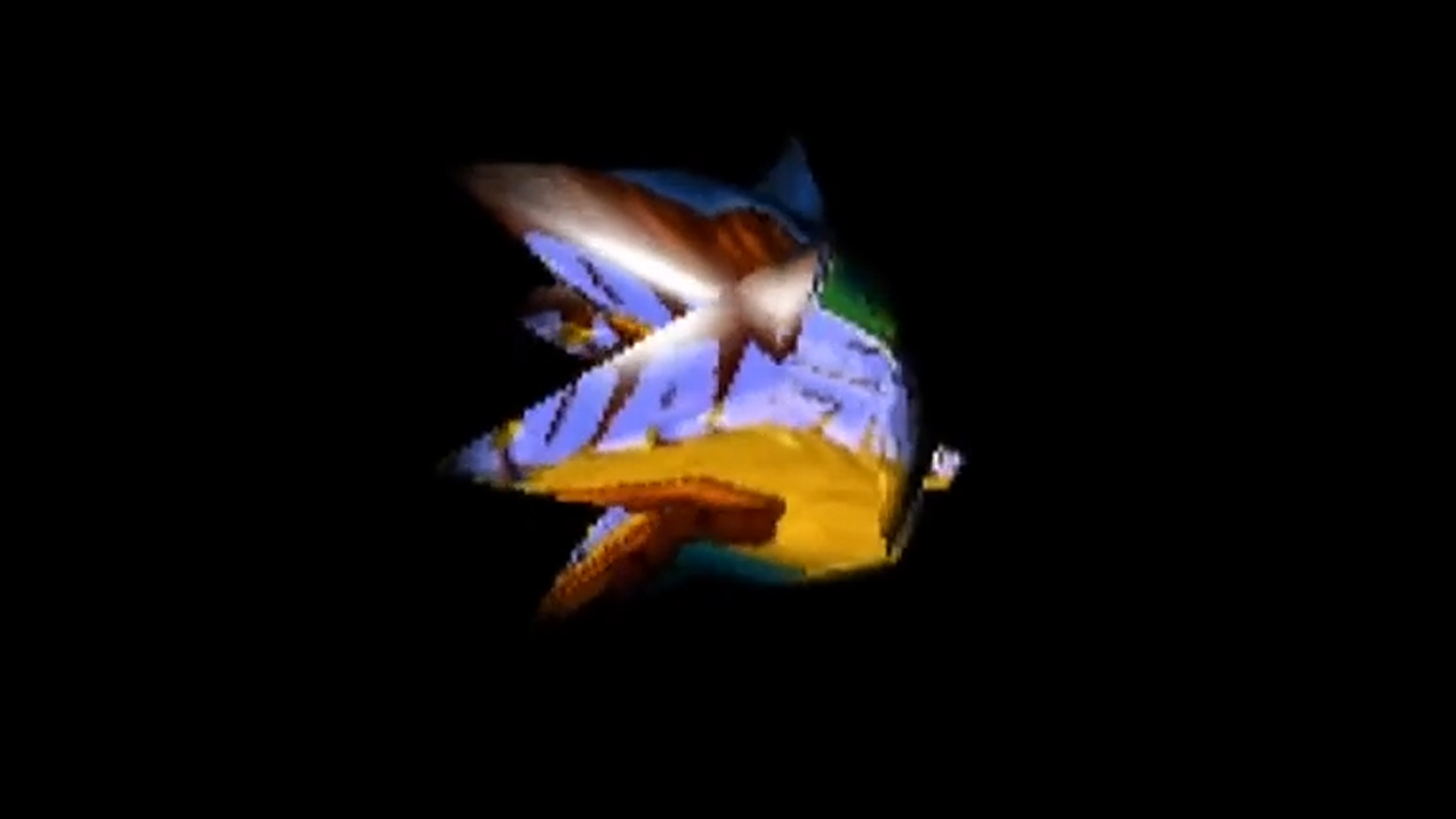
Sonic R's spinning Sonic head (1997)
Sonic R was developed by Traveller's Tales, who went on to make a little game called Lego Star Wars. But back in 1997, the team created a magnificent, bespoke game engine for Saturn that was *only* used in Sonic R. I am convinced this engine was developed solely to prove that Saturn could do shiny things comparable to those of PSone, or that RareWare logo at the start of Goldeneye. The results? Some of the shiniest things you'll ever see.
The title screen features a shiny, 3D 'R'. It's mesmerising as it bobs and twists until you realise you can move it yourself with the d-pad. Mind = blown. But then you start a game and the loading screen features a shiny, silver, rotating Sonic head, reflecting the word 'Loading'. I don't care that the real 'loading' must be written in mirror text to appear the right way round on its surface. This is amazing. All three major consoles now had true shiny things to brag about.
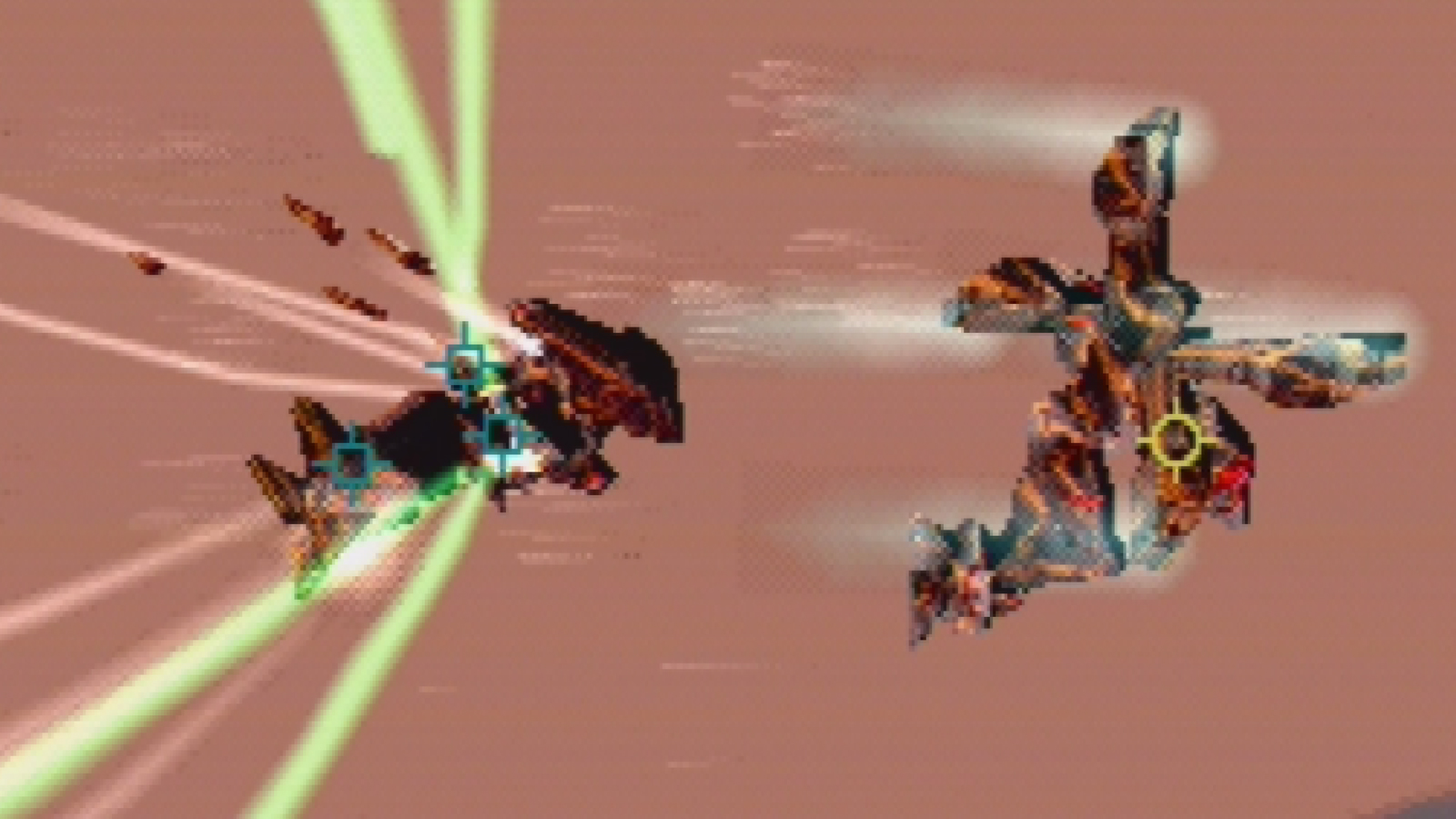
Omega Boost (1999)
Polyphony's pseudo-environment mapping technique can be pinpointed as the tipping point in history for shiny things. There's 'PPST' (Pre-Polyphony's Shiny Things) and 'PPST' (Post-Polyphony's Shiny Things'). But because the acronym reads the same both ways, people don't use it. True fact.
Basically, if a game didn't have shiny things in it from here on, it was chastised for being backward and old-fashioned. But Polyphony still had the best in-game shiny things, so the world grew excited when Polyphony Digital, developer of Gran Turismo, announced it was working on a mech shooter: Omega Boost. Yes, it is amazing to think the team hasn't only made Gran Turimso games since 1997. The mechs are wonderful. The game... not so much.
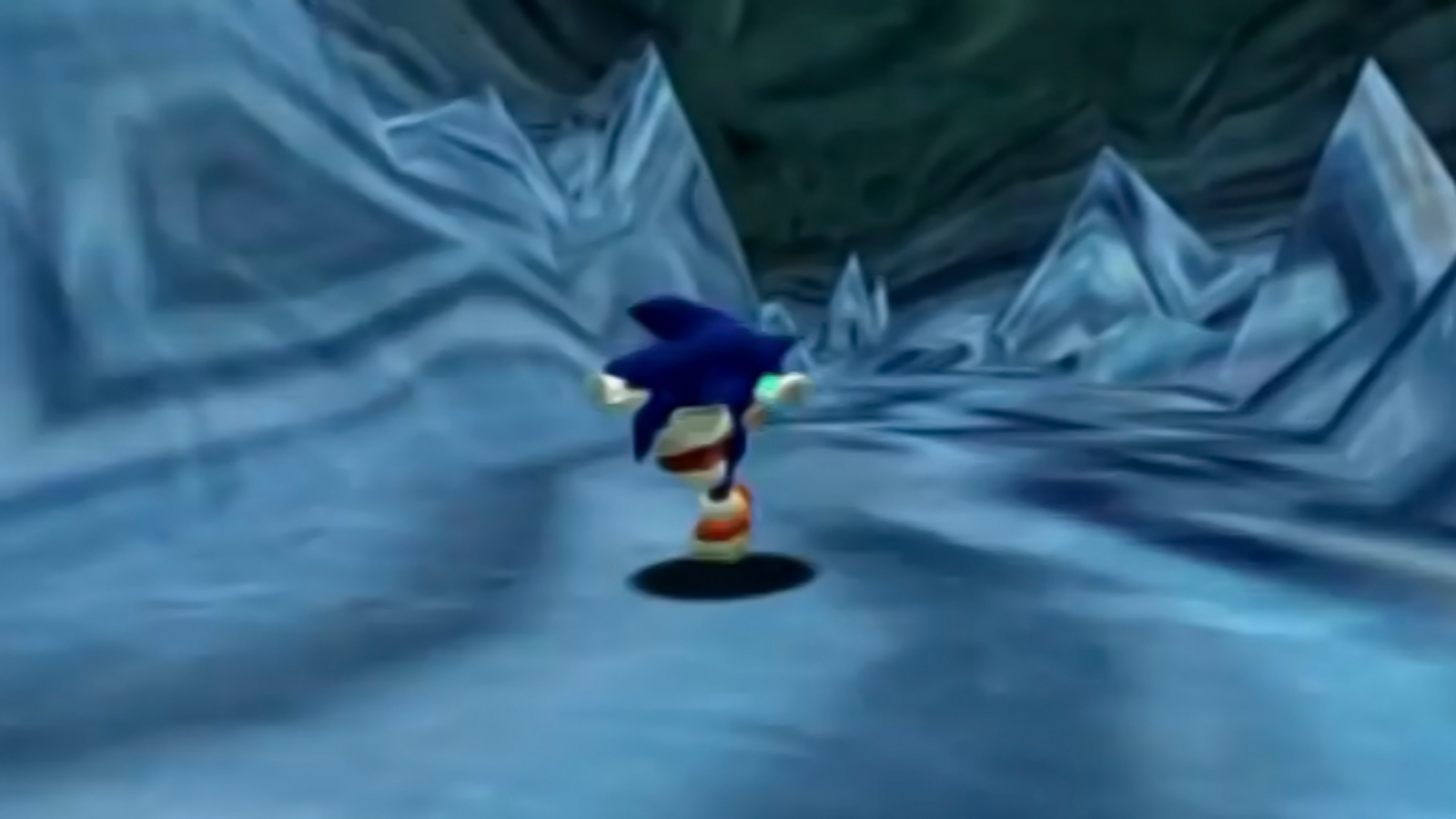
Sonic Adventure's Ice Cave (1998)
So what we needed was new technology. The 128-bit era kicked off with Sonic Adventure at the tail(s)-end of 1998, and with it came the next-generation of shiny things. Kage's trousers received the home conversion they deserved, but by this point, even they had lost their sheen compared to natively-developed wonders, such as the walls of the ice cave in Sonic Adventure, or the massive 'Master Emerald'--surely one of the largest shiny things in all of gaming.
After the previous generation struggled to render a few objects with a dazzling degree of pseudo-reflectiveness, suddenly we were running through entire caves of faceted crystal. It's a shame Sonic isn't actually reflected in them. I suspect that was always the intention, butmagnificent though the new hardware wasit was still a little shy of the power required for true reflections. What gaming needed was PS2. Yes, cue dramatic chipmunk. Or hedgehog, if there is one.
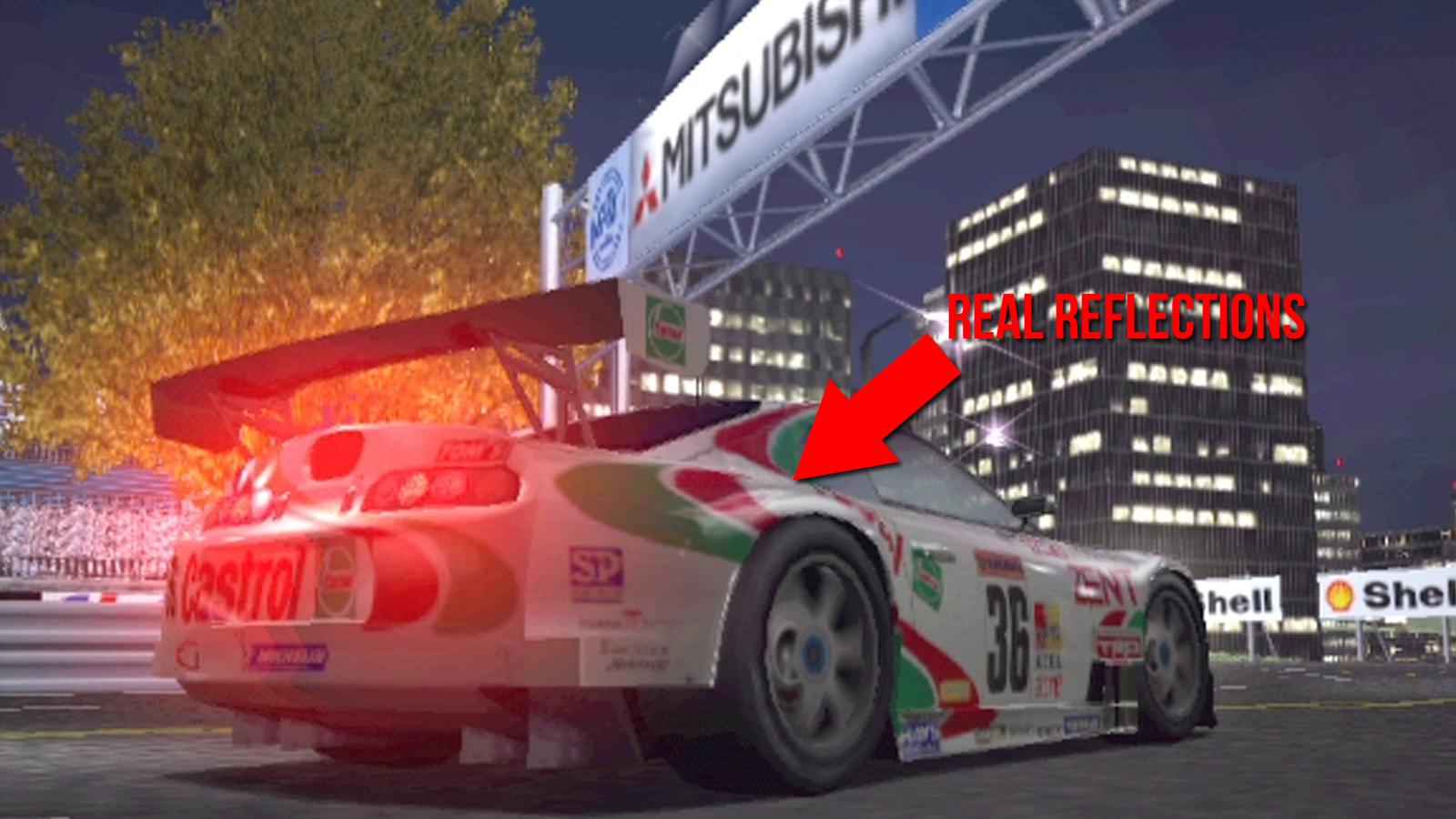
Gran Turismo 3's reflections (2001)
Well, what a surprise. Polyphony Digital led the way yet again as Gran Turismo 3 introduced console gamers to true environment mapping. What this does is create a texture on a car door (or whatever) dynamically, based on the environment it is in. So as you drive over a kerb on the inside of a turn, the red and white flashes are reflected in the car's bodywork. Know what that's doing? Simulating real shiny.
The effect is imperfect, of course. While the track is reflected, other cars are not. But still, it was common practice to race through the tunnel on Trial Mountain in the external camera view just so you could see the lights above dance over the bodywork of a Honda NSX. Yum yum yum. Where's my spoon?
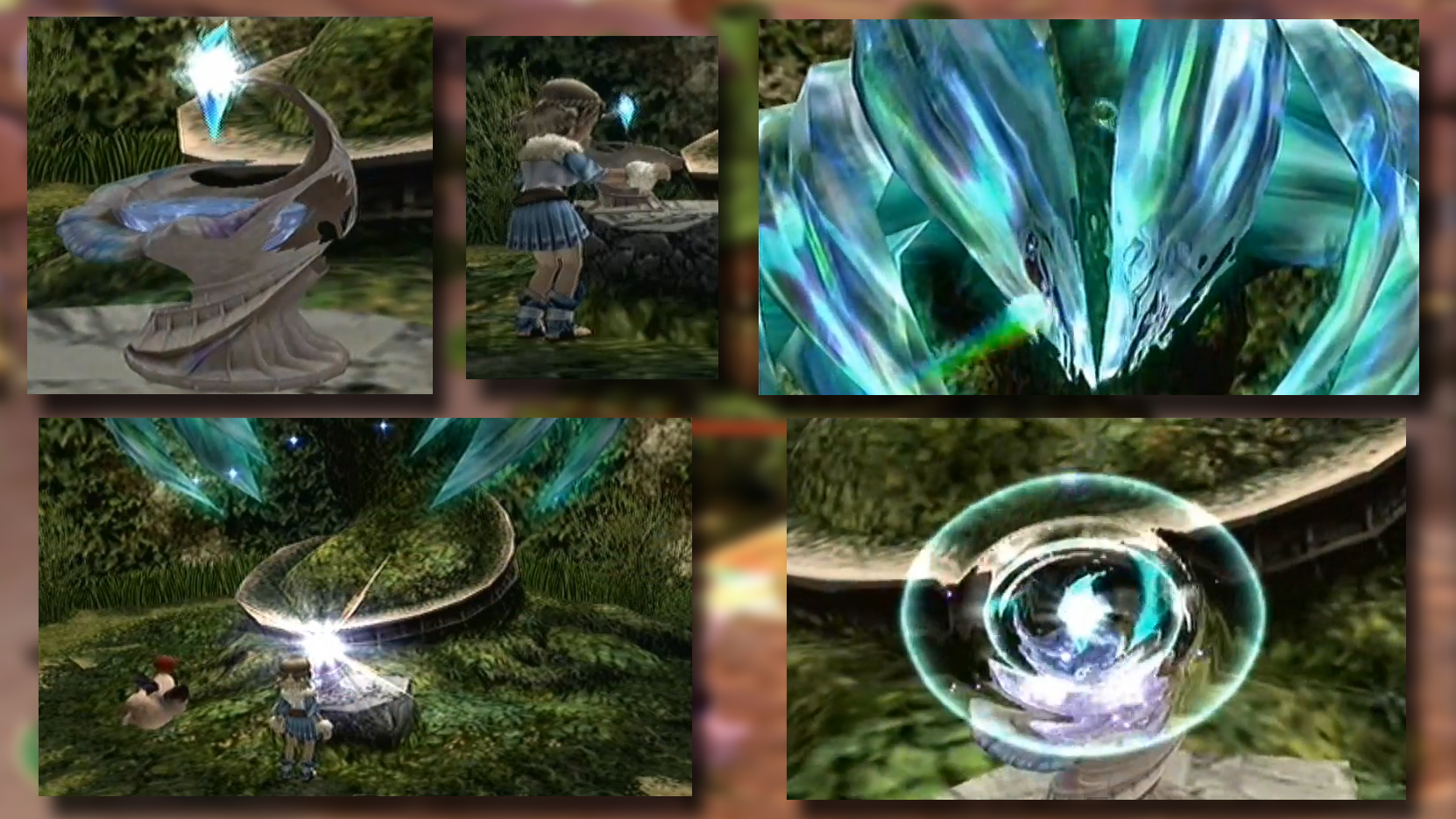
Final Fantasy: Crystal Chronicles (2003)
Crystal Chronicles here is famous for featuring four-player local co-op that can only be played with Game Boy Advances connected to the system via cables. But it made the most of both the 'Cube's graphical grunt and the game's fantasy setting to cement its place on this list as a prime example of the phenomenon.
After beating a boss, magical droplets of water form on the magically shiny leaves of magically shiny Myrrh trees. 'Magically shiny' is a good way to describe the whole game, really. But considering the Myrrh leaves also get a ripple effect as the drop forms, it easily wins a place in history. Which means a slide in this historic feature. Oh yes.
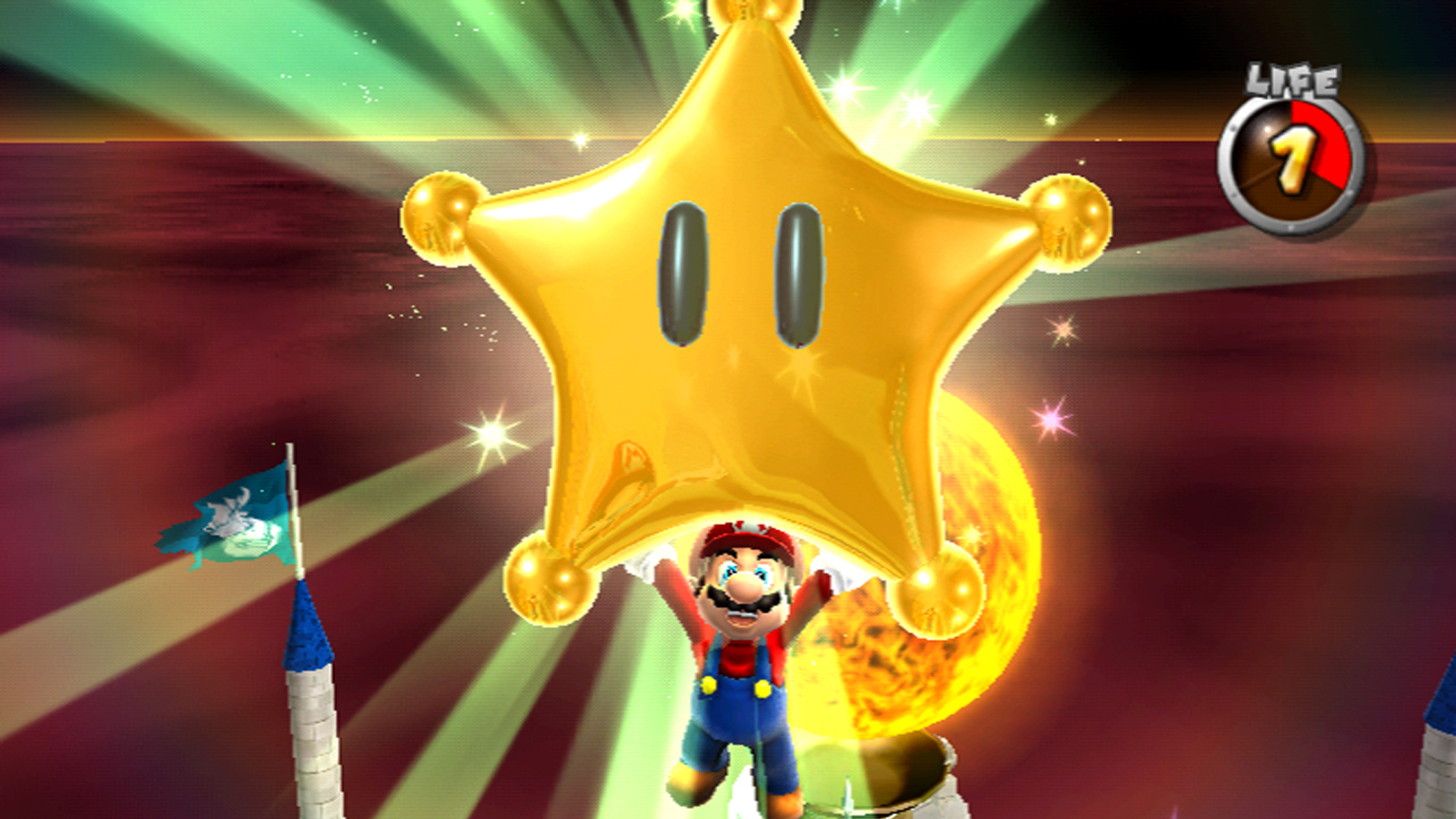
Super Mario Galaxy's Stars (2007)
Hmmm... you know what? I think Mario Galaxy was a step backwards for shiny things. Sure, the stars you get (especially the big ones like this) are ridiculously shiny and have a sort of dazzle effect around them, but this is 'Midas Lara'-style fake reflections. I don't know about you, but I feel robbed.
Still, Galaxy and its successor are worthy of inclusion for its liberal use of the old spit and polish. Star bits have sparkle, faceted ice crystals refract Mario perfectly (though they're in the sequel, of course) and even the lumas have a glow. That 'Nintendo Magic' everyone bangs on about? It's basically just shiny.
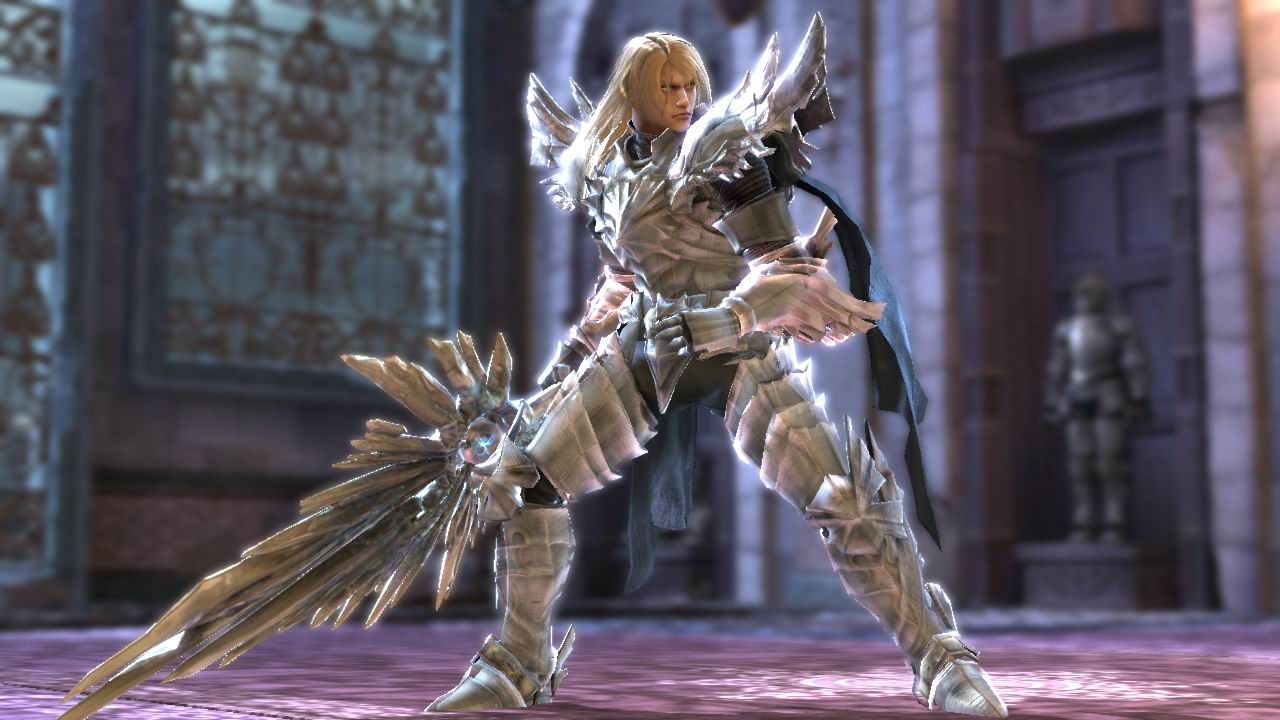
Soulcalibur 4's Siegfried (2008)
A shiny sword had to make an appearance somewhere, but there's only one choice. This is Siegfried in Soulcalibur 4, wearing the very shiniest of suits of amour. Look--there's bloom lighting flooding off his shoulders. Is there bloom lighting flooding off your shoulders? Exactly. This is the big league.
I have, in the past, criticised the artistic design of Soulcalibur 4, pointing out that it's too detailed and intricate. Yes, it demonstrates the rendering power of the console it's running on, but it's a bit 'much', in my professional opinion. But I can't fault how shiny it all is. I tip my cap to you, Siegfried.
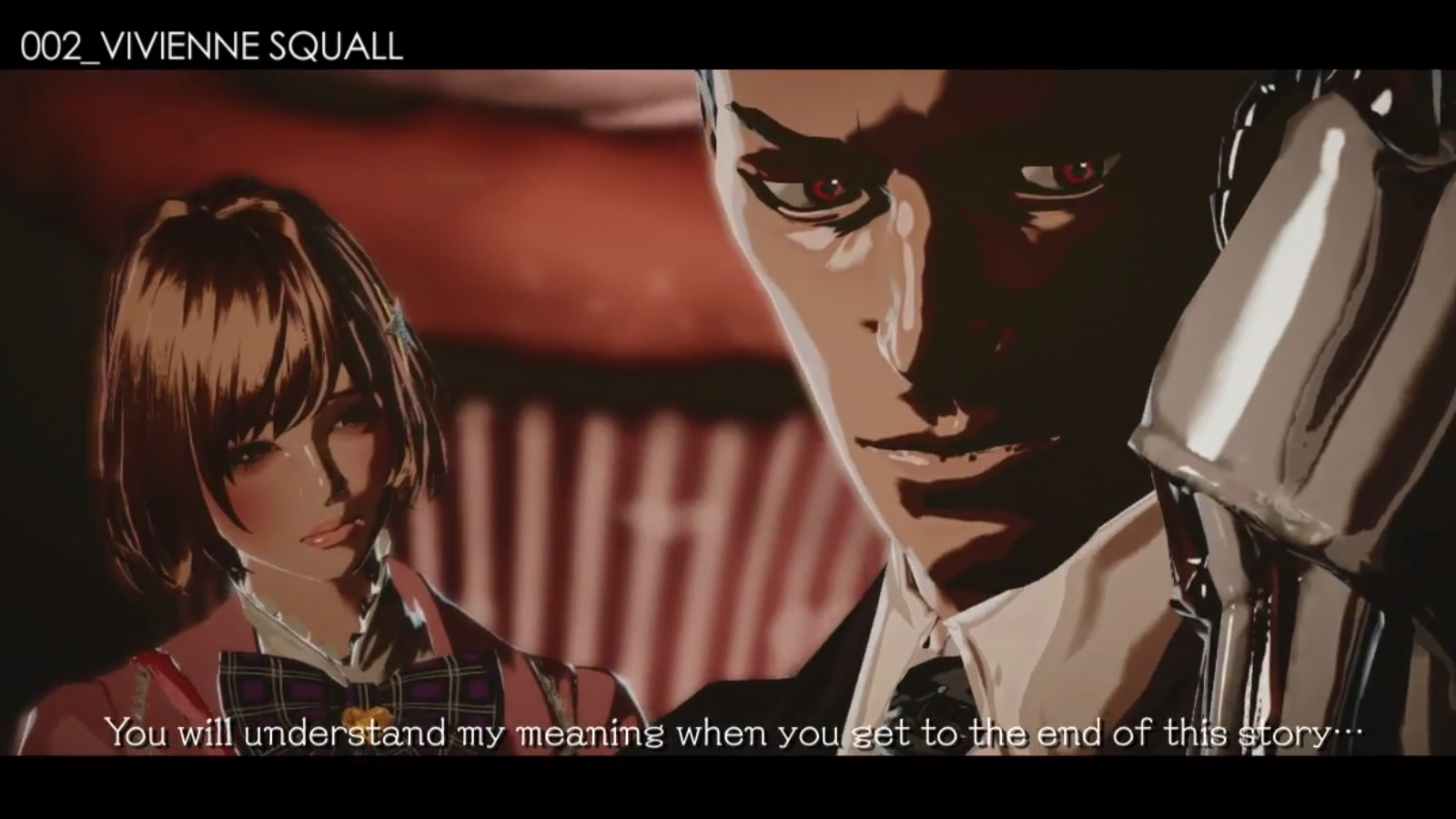
Killer is Dead (2013)
After all the hoo-ha about Gran Turismo back in the day, the glossy surface effect is now such a staple graphical effect, it can be used on everything. And so, as if to illustrate that very point, Killer is Dead is drenched in the stuff. It's like everyone washed their hair with conditioner and turtle wax, then took a bath in some baby oil (with their clothes on) and then waited for someone to press the Start Button, trying not to drip everywhere.
This is one of the shiniest games ever seen. But isn't it sad that it's merely indicative of the industry-wide shift away from shiny 'things'. Games used to be all about diamonds, coins and gems, but now it's about violence and gore and twerking, with added glossy surfaces.
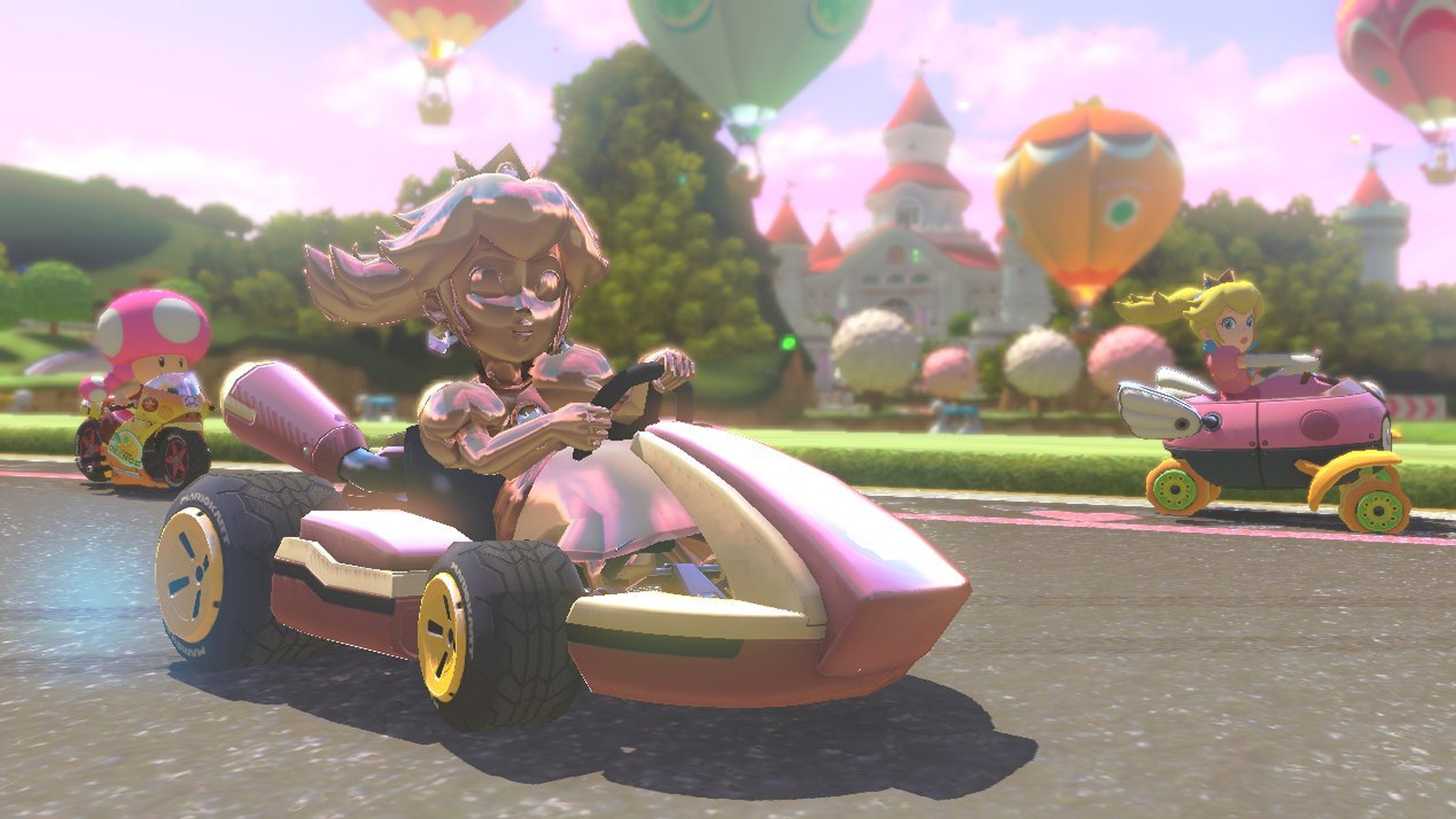
Mario Kart 8's Pink Gold Peach (2014)
I fear this is the moment shininess jumped the shark. I mean, if like me you think that Metal Mario from Super Mario 64 should be melted in a vat of molten steel in a style not dissimilar to the end of Terminator 2 (oh, sorry--spoiler alert) just to be sure, then this thing ugh. I would suggest firing it off into the depths of space, but then... what if space actually wraps like Towerfall Ascension and it ends up coming back again from the other side? I can't deal with that possibility.
So I vote that we bury all of the copies of Mario Kart 8 deep underground and hope that somehow tonnes and tonnes of earth keep Pink Gold Peach from ever rising up and stealing our souls with her flat, metallic eyes. It's all gone wrong. This is the end of history.
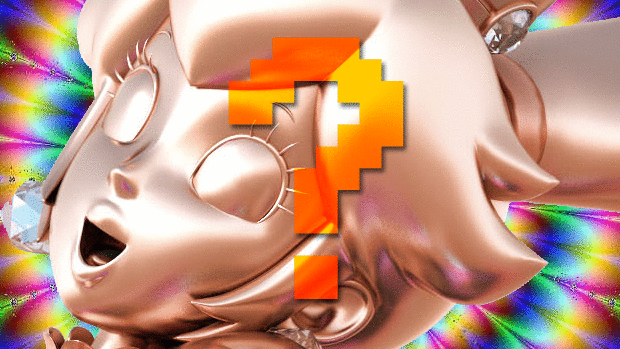
WHAT DOES IT WANT FROM ME?
So there you have it, a (brief, non-exhaustive) history of shiny things in video games. But what's your favourite? And was there another turning point, milestone or watershed moment for shiny things that I neglected to place on this marvelous list? If so, let everyone know in the shiny, shiny comments.
And if Pink Gold Peach hasn't left you an empty husk of a human being and you're looking for more reading material, check out How does Lara Croft get her hair so shiny on PS4 and Xbox One? and our Shiny Pokemon guide.

Justin was a GamesRadar staffer for 10 years but is now a freelancer, musician and videographer. He's big on retro, Sega and racing games (especially retro Sega racing games) and currently also writes for Play Magazine, Traxion.gg, PC Gamer and TopTenReviews, as well as running his own YouTube channel. Having learned to love all platforms equally after Sega left the hardware industry (sniff), his favourite games include Christmas NiGHTS into Dreams, Zelda BotW, Sea of Thieves, Sega Rally Championship and Treasure Island Dizzy.
